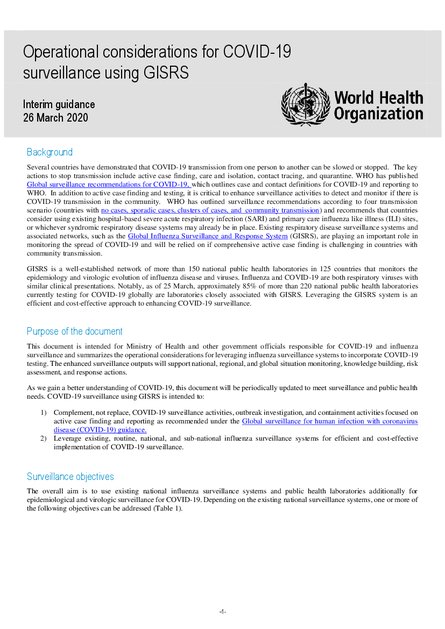
Several countries have demonstrated that COVID-19 transmission from one person to another can be slowed or stopped. The key actions to stop transmission include active case finding, care and isolation, contact tracing, and quarantine. WHO has published Global surveillance recommendations for COVID-19, which outlines case and contact definitions for COVID-19 and reporting to WHO. In addition to active case finding and testing, it is critical to enhance surveillance activities to detect and monitor if there is COVID-19 transmission in the community. WHO has outlined surveillance recommendations according to four transmission scenario (countries with no cases, sporadic cases, clusters of cases, and community transmission) and recommends that countries consider using existing hospital-based severe acute respiratory infection (SARI) and primary care influenza like illness (ILI) sites, or whichever syndromic respiratory disease systems may already be in place. Existing respiratory disease surveillance systems and associated networks, such as the Global Influenza Surveillance and Response System (GISRS), are playing an important role in monitoring the spread of COVID-19 and will be relied on if comprehensive active case finding is challenging in countries with community transmission.